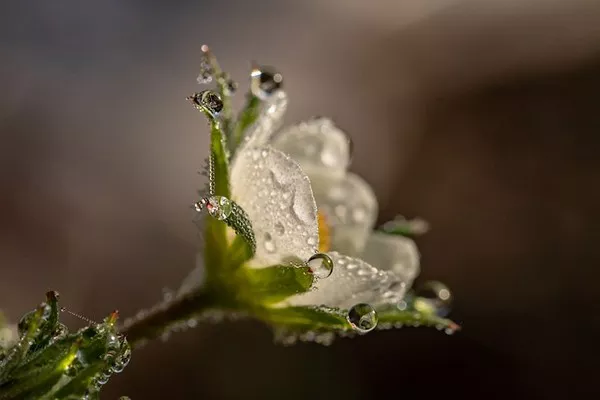Flower enthusiasts and gardeners alike can often find themselves dismayed upon discovering unsightly holes in their beloved flower leaves. These tiny perforations not only mar the aesthetic beauty of plants but can also impede their growth and overall health. To effectively address this issue, it is crucial to understand the underlying causes of these holes. In this article, we will explore the various factors that contribute to holes in flower leaves and provide insights into effective preventive measures and treatment options.
1.Insect Pests
One of the primary culprits behind holes in flower leaves is insect pests. Insects such as caterpillars, beetles, grasshoppers, and slugs can wreak havoc on delicate foliage. They feed voraciously on plant tissues, leaving characteristic holes of varying sizes and shapes. Caterpillars, belonging to the order Lepidoptera, are particularly notorious for their leaf-munching habits. The chewing mouthparts of these insects create irregularly shaped holes, often accompanied by frayed edges.
Beetles and grasshoppers, on the other hand, have strong mandibles that enable them to chew through leaf tissue, leaving semi-circular or irregularly shaped holes. Slugs, which are soft-bodied mollusks, create ragged-edged, irregular holes in flower leaves, especially during damp conditions.
Prevention and control strategies for insect pests entail a multifaceted approach. Regular inspection and early detection allow for timely intervention. Techniques like hand-picking larger insects or using insecticidal soaps, botanical insecticides, or biological controls can help manage infestations. Additionally, encouraging natural predators like ladybugs and lacewings in the garden can offer long-term pest control solutions.
2.Disease Pathogens
Disease pathogens can also contribute to the formation of holes in flower leaves. Fungal, bacterial, and viral infections can weaken plant tissues, causing them to become susceptible to damage from environmental factors or secondary pests.
Fungal diseases such as powdery mildew, downy mildew, and leaf spot diseases are common culprits. These infections often manifest as circular or irregularly shaped lesions on the leaves, which eventually result in the formation of holes. Bacterial infections like bacterial leaf spots can cause similar symptoms, leading to hole formation. Viral diseases, although less common, can weaken plants’ immune systems, making them more prone to damage by insects or environmental stressors.
Preventing the spread of disease pathogens involves maintaining good hygiene practices in the garden, ensuring proper air circulation, and avoiding overhead watering. Applying appropriate fungicides or bactericides as preventive measures can help deter the development and progression of diseases, thus minimizing the likelihood of hole formation.
3.Environmental Stressors
Environmental stressors play a significant role in creating holes in flower leaves. Factors such as extreme temperatures, drought, waterlogging, excessive sunlight, or poor soil conditions can weaken plant tissues, making them more susceptible to damage.
Extreme heat or cold can desiccate leaf tissues, leading to necrosis and hole formation. Drought conditions can cause wilting and subsequent tissue death, resulting in gaps in the leaves. Conversely, overwatering or waterlogged soil can suffocate the roots and lead to root rot, compromising the overall health of the plant and its foliage.
To mitigate the impact of environmental stressors, it is essential to provide optimal growing conditions for plants. This includes providing adequate water, ensuring proper drainage, and implementing mulching techniques to regulate soil moisture. Providing shade during scorching summers or using protective covers during frosty winters can shield plants from extreme temperatures.
4.Physical Damage
Accidental or intentional physical damage can also cause holes in flower leaves. Human activities, such as careless pruning, mowing, or handling plants roughly, can lead to torn or perforated foliage. Animals like rabbits, deer, or rodents may nibble on flower leaves, causing irregularly shaped holes.
Preventing physical damage involves exercising caution while performing gardening tasks and using appropriate tools for pruning and trimming. Erecting barriers or installing fencing can deter animals from accessing the garden and damaging the plants.
conclusion
To address holes in flower leaves, it is important to identify the specific cause. Regular inspection and early detection of pests or diseases are crucial for prompt treatment. Integrated pest management practices, including hand-picking insects, using insecticidal soaps or botanical insecticides, and encouraging natural predators, can help manage insect infestations. Proper hygiene practices, adequate watering, maintaining optimal growing conditions, and implementing protective measures can mitigate damage from environmental stressors. Physical barriers, deterrents, and repellents can help deter animals and minimize physical damage. By understanding the causes and implementing appropriate preventive measures, gardeners can protect their plants and maintain healthy foliage.


